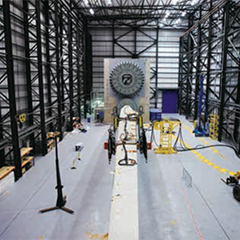Two renowned industry experts discuss how improved knowledge will be used to drive standardisation, as well as the development of new coatings and better structural solutions for a new generation of high-efficiency wind turbines.
Energy has long been a ‘hot topic’ of political debate, but has recently gathered even more momentum, following the publication of the Community Energy Strategy from the Department of Energy & Climate Change (DECC) in January 2014. And whatever your opinion on wind turbines, there is no question that their role in the UK energy landscape continues to grow.
According to RenewableUK, wind energy’s contribution to UK energy needs has skyrocketed from less than 400 MW in 2000, to over 11,000 MW in October 2014. In 2013/14 alone, wind capacity grew by almost 15%, achieved by increasing the number of both offshore and onshore systems available to the grid. Each type of turbine has its own challenges – both have to be mechanically strong in order to withstand a hugely varying wind environment; for example, offshore turbines experience an average wind speed of around 14 m/s off the coast of the UK.
And offshore systems are particularly challenging to construct, often using up to four times more steel and concrete than in an onshore turbine. But maintenance is the biggest single issue facing offshore systems. Their remote location means that repair and reworking of blades is hugely expensive – finding a way to extend the lifetime of their materials is therefore a key target of industry.
Whether offshore or onshore, as energy demand has increased, turbines have undergone something of a growth spurt – the longer the wind turbine blade, the more power it can produce. Today’s sector leaders produce turbine blades up to 80m in length, but for the next generation of wind turbine, blades are likely to reach upwards of 100m in length. This offers a huge challenge to those working in materials development
– lengthening a blade hugely increases its mass, by almost a factor of three. This means that today’s blades are now so large that gravity has overtaken aerodynamics as the dominant load on a turbine. And so, reducing weight has become another top priority in blade design.



























